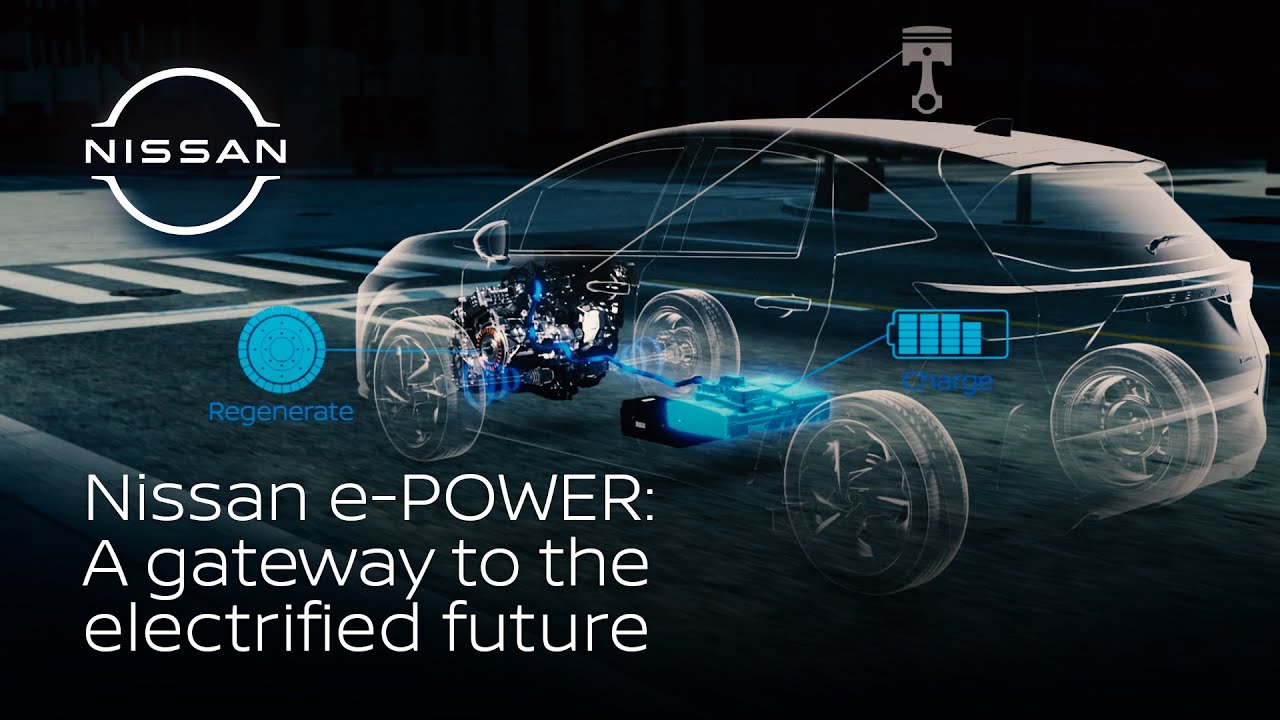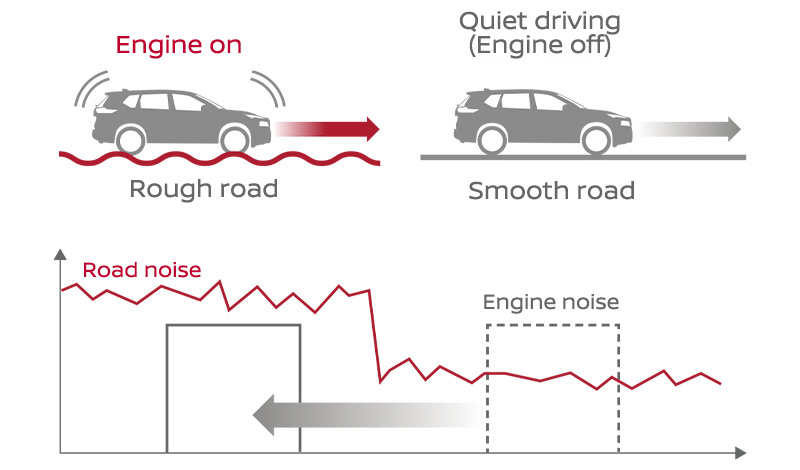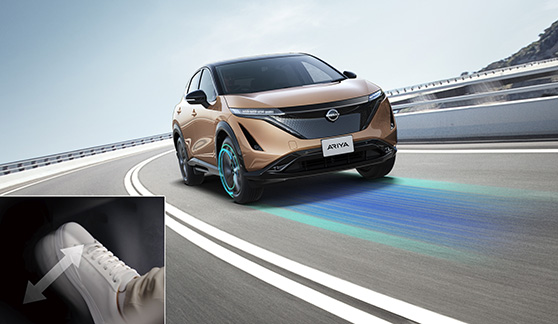e-POWER control technology
Advanced control technology supports the powerful and quiet driving that is characteristic of motor drive
e-POWER is Nissan's unique electric powertrain which generates electricity from an engine and is 100% motor driven. In addition to the smooth and powerful driving that is unique to and characteristic of motor drive, advanced control technology manages the engine's operation, providing an overwhelmingly quiet experience.
In areas where road noise is low, such as in urban areas, the engine's operation is suppressed as much as possible, and in areas where road noises are high, such as when driving at high speeds or on rough road surfaces, the engine generates electricity and realizes a quietness that makes you feel as if the engine isn't there.
In addition, some vehicle models are able to predict the energy input-output of Li-ion batteries on the route based on the navigation information, providing a quieter and more efficient drive.

System Operation
e-POWER provides an overwhelmingly quiet experience with less frequent engine operation when compared to general hybrids.
At low to medium speeds, such as in urban areas, the motor is only driven via the battery.
When the driver releases the accelerator for deceleration, the regenerative brake is activated and the battery is charged with the electricity that is generated.
When driving at high speeds, the engine generates electricity to drive the motor and charge the battery.
When strong acceleration is required, the motor combines the electricity generated by the engine and the electricity from the battery, and then powerfully drives the vehicle.

Furthermore, by using the road environment and route information of the road that you are driving on, e-POWER intelligently controls the engine operation timing to enable EV driving at the places where you want to drive quietly.
Power generation control adapted to the road surface conditions

Predictive battery charge control
In addition, vehicles are able to predict the energy input-output of Li-ion batteries on the route when the destination is set on the navigation system. When going downhill, the frequency of EV driving is increased in advance to reduce the remaining battery level and maximize the recovery of regenerative energy. When approaching the destination, the engine is activated in advance to increase the remaining battery level and enable quiet EV driving near the destination.

System Mechanism
e-POWER has a high-power motor and a high-performance lithium-ion battery, and can drive battery-only in a wide range of situations.
Because the engine is specialized for power generation and is not connected to the drive wheels, the system can freely control the engine's operation. Power generation timing is controlled by judging based on the vehicle speed, degree of acceleration, and battery charge level, etc.
Power generation control adapted to the road surface conditions
Technology is also being introduced that estimates road surface roughness from minute fluctuations in wheel speed and actively operates the engine on rough road surfaces. Additionally, by operating at efficient engine RPM when generating power, the engine's operating time is reduced and high fuel efficiency is achieved. Through step-by-step changes to engine RPM according to vehicle speed, engine operation is controlled so that the engine isn't apparent.

Predictive battery charge control
When a destination is set on the navigation system, the energy input-output of Li-ion batteries during the drive is predicted based on various information such as the average vehicle speed that takes into account the gradient and traffic congestion enroute, air-conditioning usage, etc.
Based on this information, the target remaining battery level during the route is calculated in order to provide a quiet and efficient drive.
By predicting charging/discharging along the route and intelligently controlling the engine operation timing, it maximizes energy regeneration on downhill roads and realizes quiet EV driving near the destination. The remaining battery level is controlled so that the vehicle can start in EV driving mode even when restarting.





